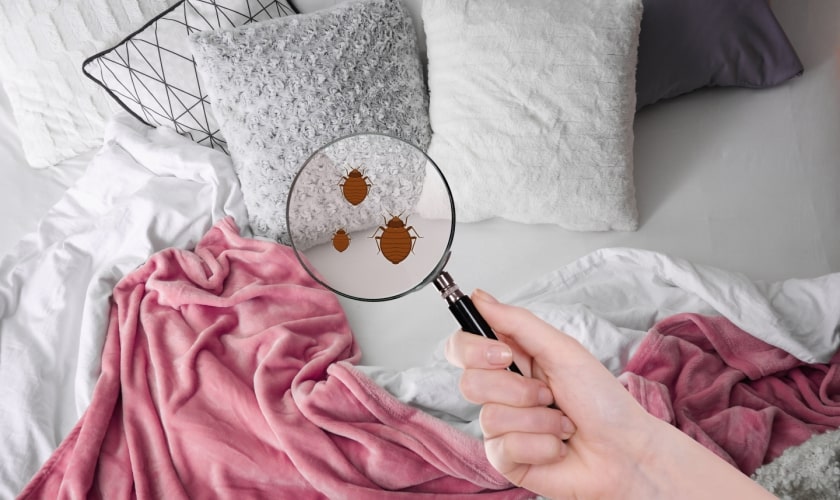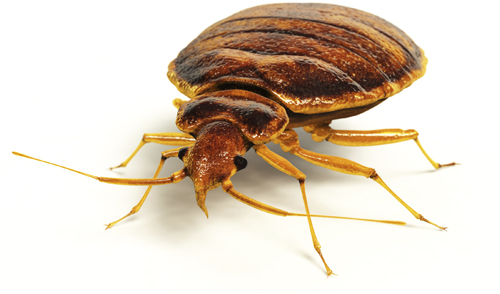Professional Kings Bug Control Services Cincinnati OH
Sorts Of Insect Control: Which Method Is Right for Your Problem?
When faced with a parasite invasion, the choice of an appropriate method for pest control is essential in successfully handling the circumstance. By discovering the various kinds of bug control techniques readily available, individuals can make educated decisions tailored to their special conditions, ensuring an extra effective and sustainable outcome in pest removal.
Chemical Parasite Control
Chemical bug control includes making use of synthetic or naturally obtained chemicals to manage and eradicate pest populations properly. This approach is generally used in agriculture, forestry, and residential setups to deal with a large range of pests, consisting of rats, bugs, and weeds. Using chemical pesticides can offer quick and targeted remedies to pest invasions, making it a popular option for numerous people and services.
One of the crucial advantages of chemical parasite control is its capability to promptly get rid of pests, minimizing the risk of damages to crops, home, and human wellness. By utilizing specific chemicals that target specific parasites, this technique can properly manage problems while minimizing injury to advantageous microorganisms and the environment when used correctly.
Nevertheless, making use of chemical insect control additionally raises worries about prospective damaging effects on non-target types, water resources, and human health. It is important to adhere to safety guidelines, use chemicals sensibly, and consider alternate bug control approaches to minimize these dangers and make sure lasting pest management methods.
Organic Parasite Control
Organic pest control, also called biocontrol, uses living microorganisms to reduce and handle insect populaces normally. This approach uses the power of nature to control pests without the need for synthetic chemicals. Biocontrol can involve the introduction of natural enemies of the pest species, such as microorganisms, predators, or parasites, to subdue parasite populaces. By utilizing the bug's natural predators or pathogens, organic parasite control supplies a sustainable and environmentally pleasant option to pest administration.

Mechanical Bug Control
Utilizing physical and hand-operated methods to manage pest populaces, mechanical parasite control uses an alternative technique that does not depend on making use of living microorganisms or synthetic chemicals. This technique entails making use of obstacles, catches, or various other tools to physically deter or eliminate insects. By blocking insect entrance factors or establishing up catches to capture them, mechanical pest control can efficiently decrease invasions without introducing chemicals into the atmosphere.
One typical example of their website mechanical insect control is the use of mesh screens on doors and windows to avoid insects from entering buildings. This simple yet effective method acts as a physical barrier, keeping pests out while allowing for proper ventilation. Additionally, devices like mousetraps, fly swatters, and ultrasonic repellents drop under the mechanical pest control classification.
While mechanical insect control approaches can be labor-intensive and need normal surveillance and upkeep, they supply a environmentally pleasant and sustainable remedy for handling bug invasions. By integrating different mechanical strategies, homeowner can develop a thorough bug control strategy that decreases dependence on chemical pesticides.
Physical Pest Control

Some common physical pest control techniques consist of using obstacles such as webs or screens to avoid parasite access, catches to record and remove pests, and hand-picking to physically eliminate insects from plants or structures. Furthermore, methods like warm treatments can be utilized to manage insects like bed bugs by raising the temperature to levels that are lethal to the pests.
Physical parasite control is specifically valuable in incorporated parasite administration (IPM) methods, where several insect control techniques are combined for effective pest monitoring while decreasing the usage of chemicals. By using physical insect control techniques, people can properly address pest invasions with marginal ecological influence.
Integrated Pest Administration
When carrying out physical parasite control methods as part of pest management techniques, Integrated Insect Administration (IPM) becomes a detailed technique that leverages different techniques to effectively regulate pest populations. IPM concentrates on long-lasting prevention of parasites with a combination of organic, cultural, physical, and chemical devices tailored to details insect issues. By incorporating multiple control techniques, IPM aims to decrease the dangers connected with bugs while also minimizing reliance on chemical options.
One key facet of IPM is the emphasis on surveillance and evaluating pest populaces to determine one of the most appropriate control approaches. This positive strategy permits early intervention and targeted techniques, leading to extra efficient pest administration. Additionally, IPM advertises eco pleasant practices by focusing on non-chemical control approaches and only utilizing chemicals as a last hope.
Verdict

By making use of the pest's natural predators or virus, biological parasite control provides a eco friendly and lasting option to pest monitoring. - Kings pest control cincinnati oh
Utilizing physical and hand-operated techniques to take care of pest populations, mechanical parasite control provides a different approach that does not depend on the usage of living microorganisms or synthetic chemicals.An efficient technique to managing pest populations without depending on chemical or organic methods involves the use of physical bug control strategies.When executing physical bug control approaches as component of parasite management techniques, Integrated Bug Monitoring (IPM) arises as a thorough approach that leverages various techniques to efficiently manage pest populaces. Chemical bug control entails the usage of chemicals, organic bug control makes use of all-natural killers, mechanical bug control entails physical obstacles, physical bug control consists of capturing or eliminating bugs, and integrated insect administration integrates several methods for a holistic approach to pest control.